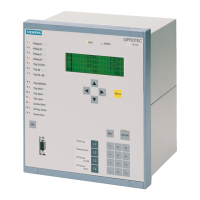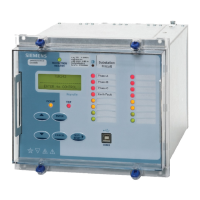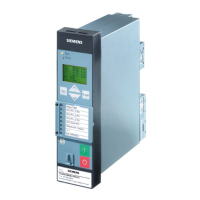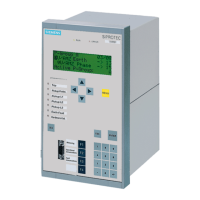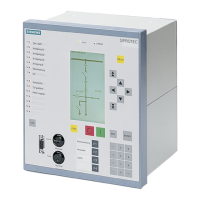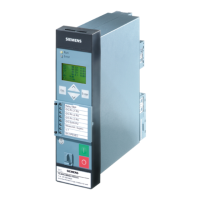7UT51 v3
Time Overcurrent Protection (50HS and 50/51)
8
PRIM-2330C 101
8.4.1 Definite Time Element (50)
If DEFINITE TIME is selected in Address 2111, the
overcurrent element operates as a definite time
element (50) using its own pickup threshold level
(Address 2112) and time delay (Address 2113). A
typical pickup threshold level is 1.4 times the
maximum expected overload current.
8.4.2 Inverse Time Element (51)
If an inverse-time characteristic is selected in
Address 2111, the overcurrent element operates as an
inverse-time element (51). Address 2114 specifies the
pickup threshold level (a typical setting is 1.4 times the
maximum expected overload current). A time dial
setting (Address 2115) determines which particular
characteristic curve (of the type selected in
Address 2111) the element uses to determine the time
delay until trip. Finally, Address 2116 determines if the
value used as the measured current contains only the
fundamental component (without harmonics) or is the
computed true root-mean-square (rms) current (with
harmonics).
2112 50T PU
Pickup threshold level for the definite
-
time overcurrent
element (50), which is specified as a multiple of the
rated nominal current (I
N
) of the monitored winding (or
side) of the protected object. A 50 pickup will occur if the
fundamental component of a measured phase
-
current
reaches this threshold.
Range: 0.10
–
30.00 I
n
Default: 2.00 I
n
2113 50T DELAY
Time delay between definite
-
time overcurrent (50)
pickup and trip. At least one measured phase
-
current
must remain above the 50 pickup threshold for this
duration before a trip will occur. This time delay is in
addition to the inherent operating time of the element.
The value ∞ will prevent a 50 trip.
Range: 0.00
–
32.00 s, or ∞
Default: 0.30 s
2114 51 PU
Pickup threshold level for the inverse
-
time overcurrent
element (51), specified as a multiple of the rated nominal
current (I
N
) of the monitored winding (or side) of the
protected object. By convention (to emulate an
electromechanical relay), a 51 pickup will occur when a
measured phase
-
current reaches 110% of this setting.
The measured current can either include only the
fundamental component, or be the true rms current
(see Address 2116).
Range: 0.10
–
20.0 I
n
Default: 2.00 I
n
2115 51 T
-
DIAL
Time dial setting to control the time delay between
inverse
-
time overcurrent (51) pickup and trip. The
remaining time delay is determined by this setting, the
choice of inverse
-
time characteristic made in
Address 2111, and the instantaneous measured
-
current
level. At least one measured phase
-
current must remain
above the 51 pickup threshold for the duration for a trip to
occur. This time delay is in addition to the inherent
operating time of the element. The value ∞ will prevent a
51 trip.
Range: 0.50
–
32.00 s or ∞
Default: 0.50 s
2116 MEAS. FORMAT
Choice of whether the measured current value used by the
inverse
-
time overcurrent element (51) will include only the
fundamental component or the computed true rms value.
Option Description
w/o
HARMONICS
51 element operates using only the
fundamental component as the
measured current in order to provide the
fastest operation (default).
WITH
HARMONICS
51 element operates using the computed
true rms current to emulate an
electromechanical overcurrent relay.

